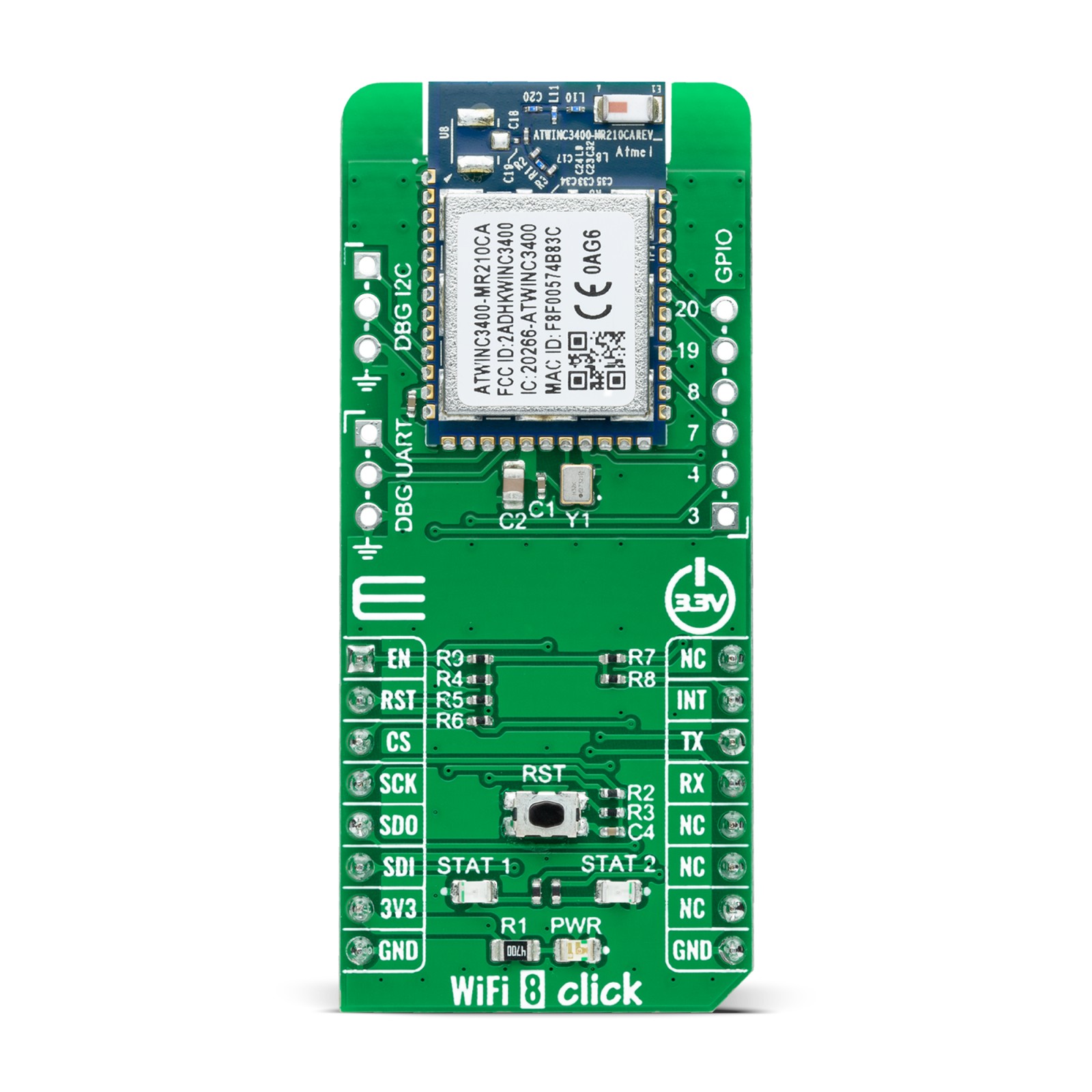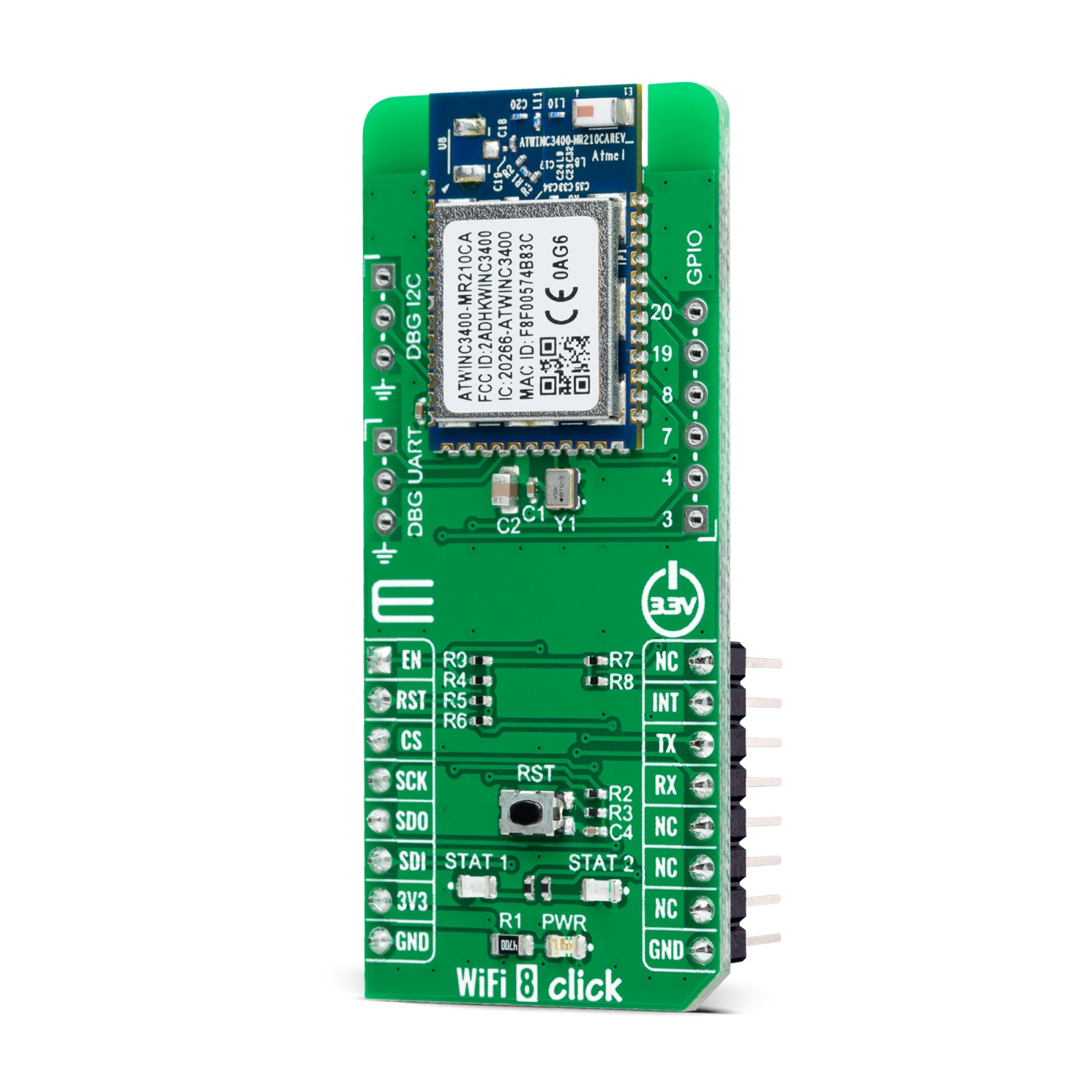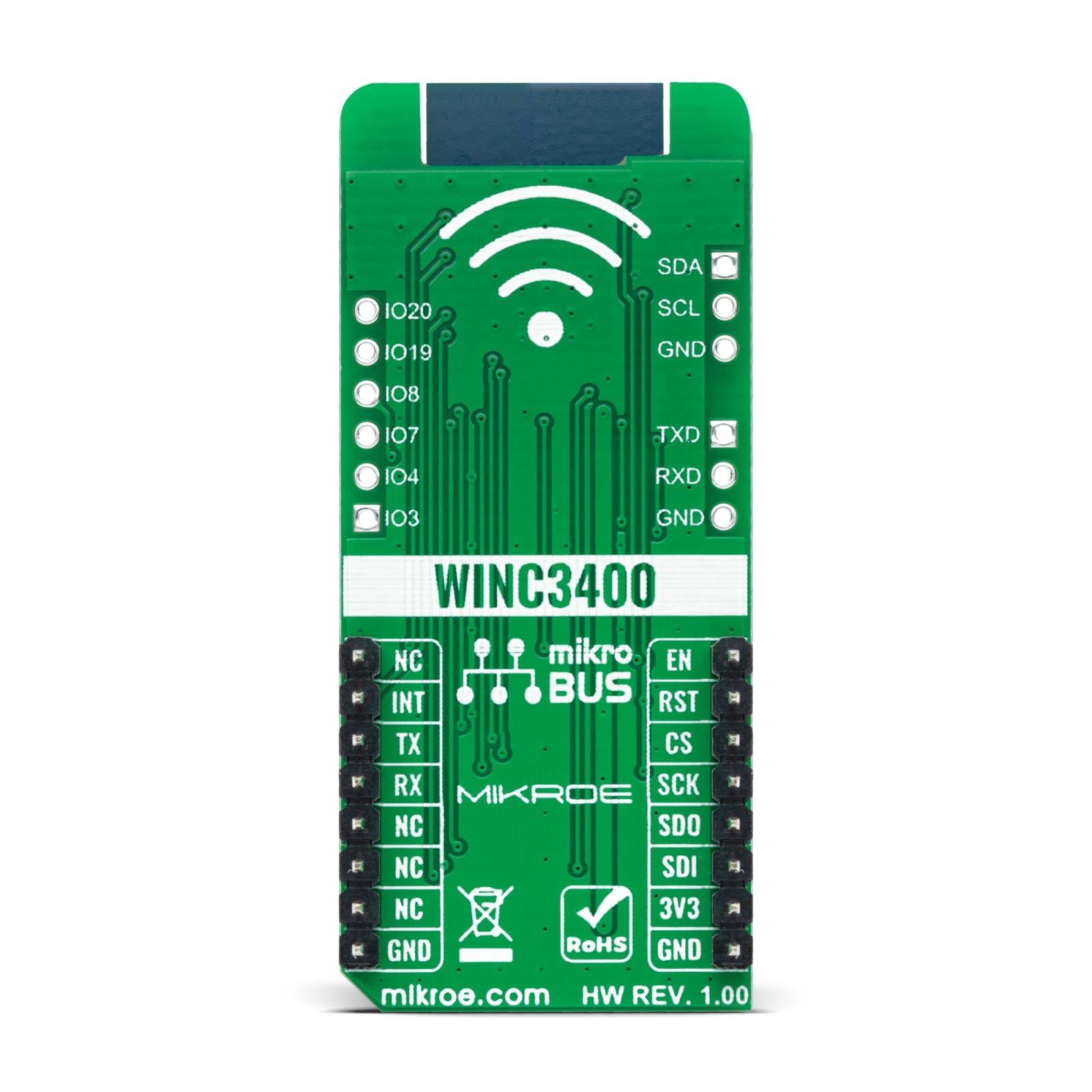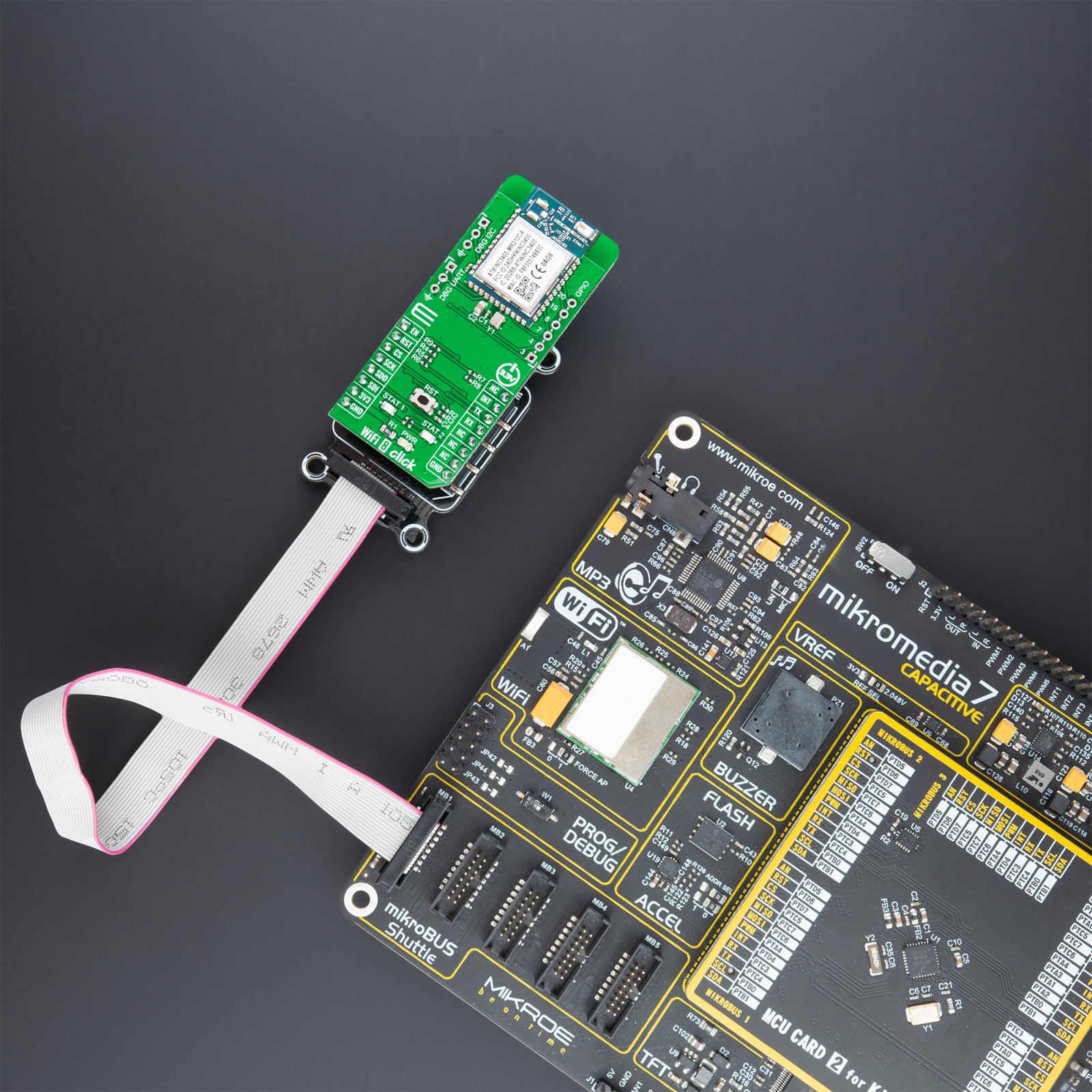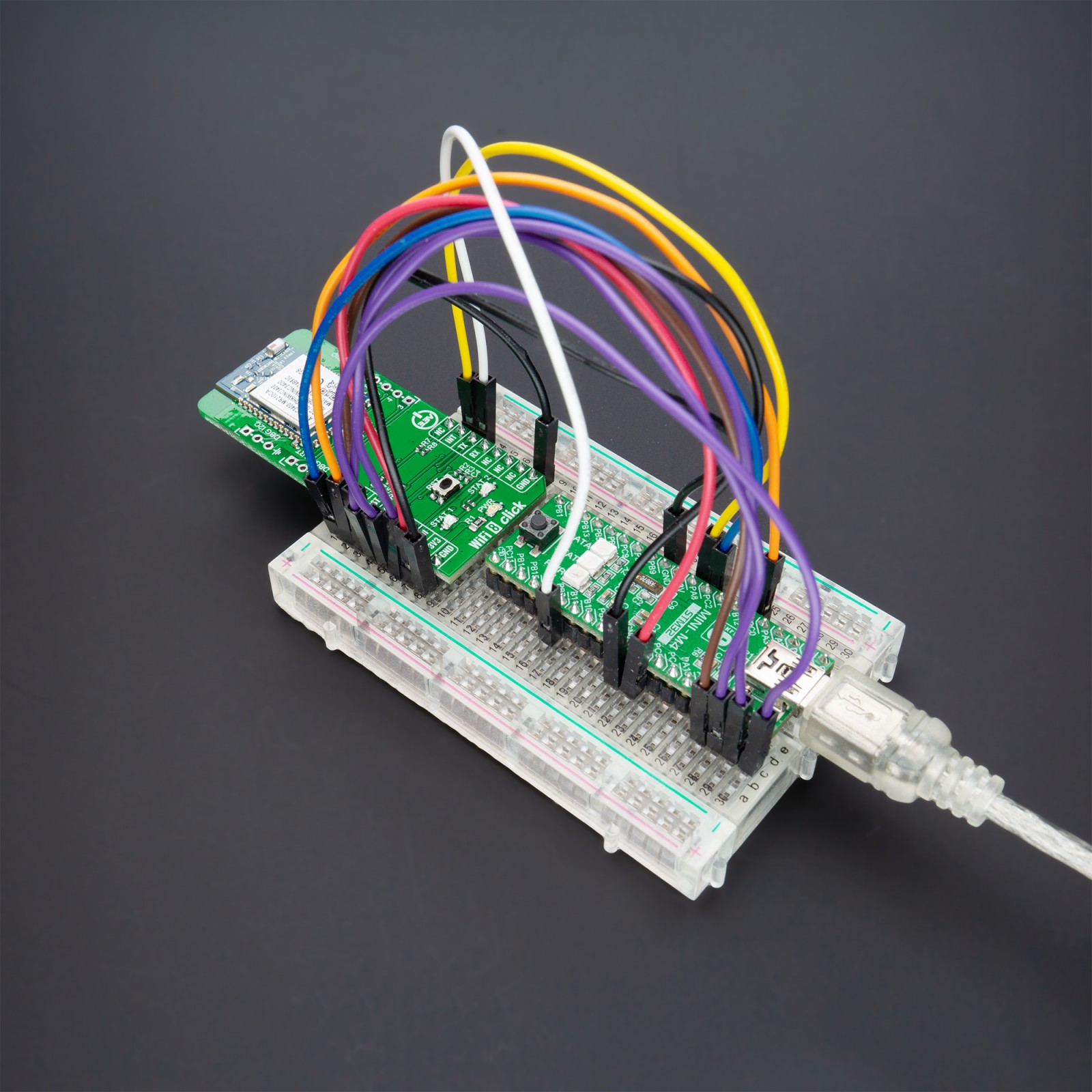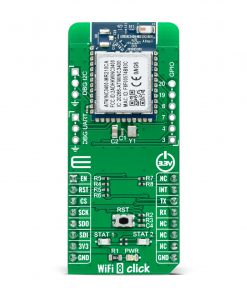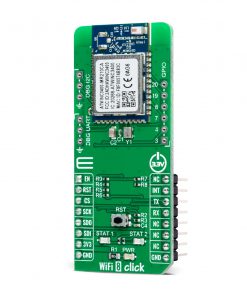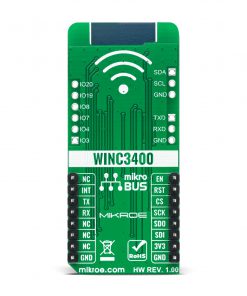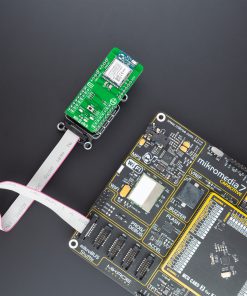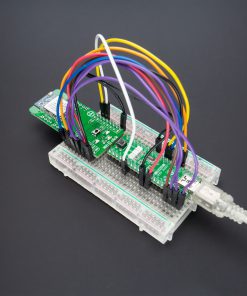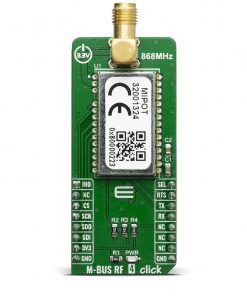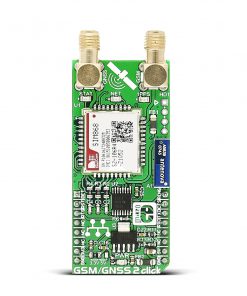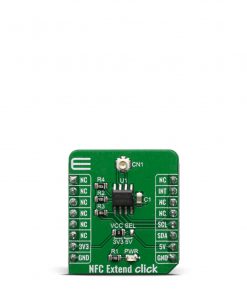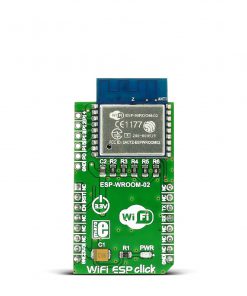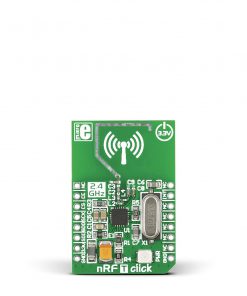Subtotal: R715.00
WiFi 8 Click
R925.00 ex. VAT
WiFi 8 Click is a compact add-on board that contains a wireless combo module. This board features the ATWINC3400-MR210CA, wireless a Bluetooth 5.0 certified module optimized for low power and high-performance mobile applications from Microchip Technology. This module comes with integrated power and low-noise amplifiers, transmit/receive switch (for WiFi and Bluetooth), a power management unit, an integrated 2.4GHz chip antenna, and an additional 32.768 kHz clock for Sleep operation. It utilizes highly optimized IEEE 802.11 Bluetooth coexistence protocols and provides Serial Peripheral Interface to interface with the host controller. This Click board™ is suitable for highly integrated and cost-effective applications, industrial wireless control, Bluetooth gateway, smart home applications, and many more.
WiFi 8 Click is supported by a mikroSDK compliant library, which includes functions that simplify software development. This Click board™ comes as a fully tested product, ready to be used on a system equipped with the mikroBUS™ socket.
Stock: Lead-time applicable.
| 5+ | R878.75 |
| 10+ | R832.50 |
| 15+ | R786.25 |
| 20+ | R756.65 |

 Alcohol 3 Click
Alcohol 3 Click 